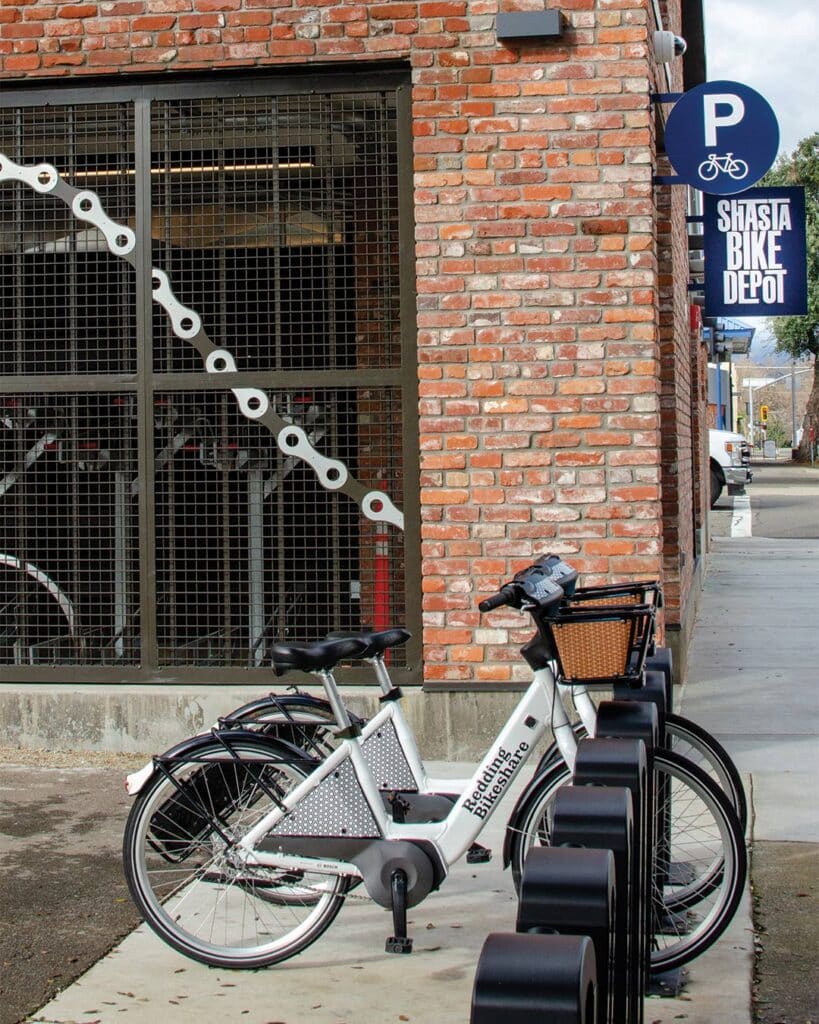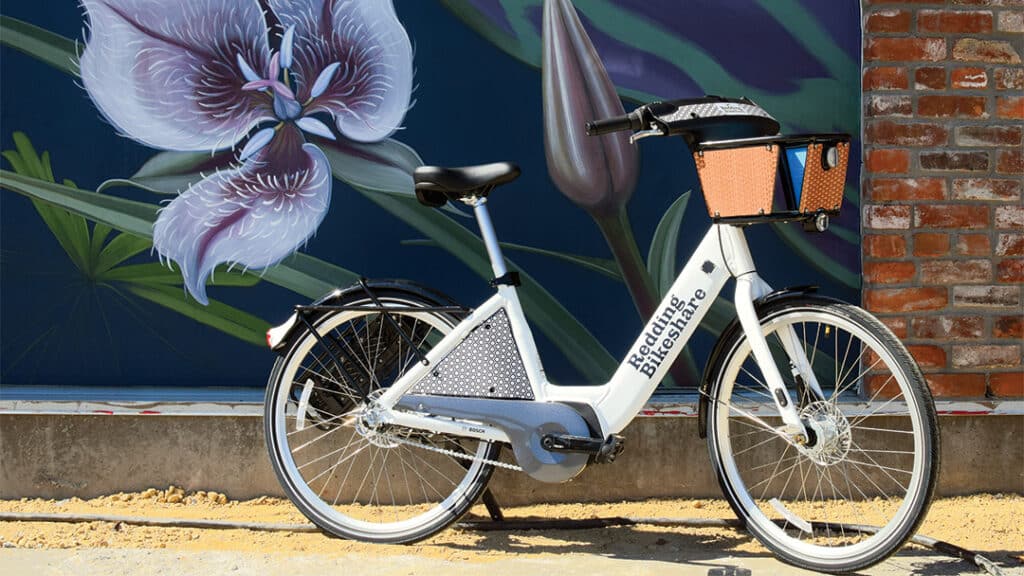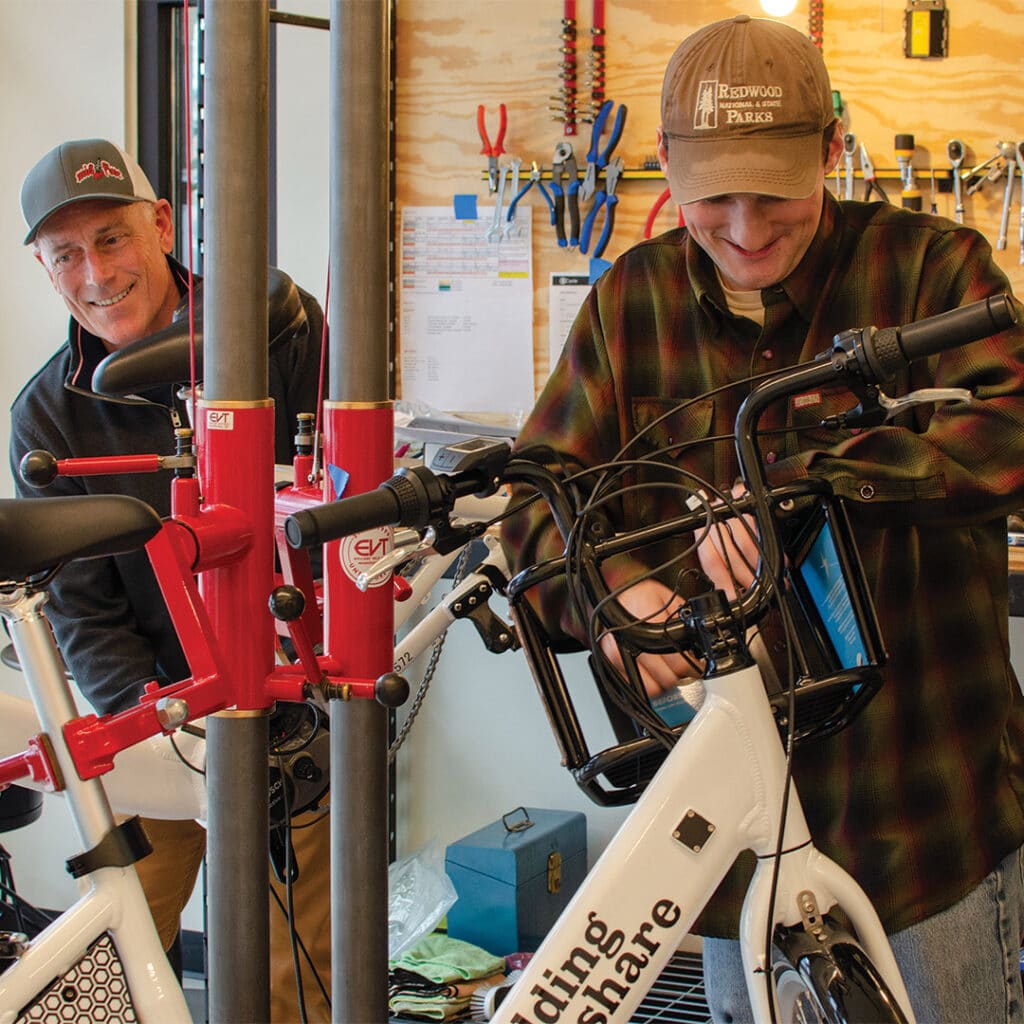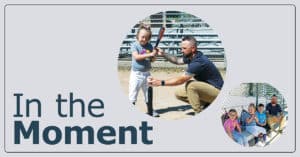Cyclist’s Haven
Downtown Redding’s Bike Depot…
Can you envision Redding transformed into a cyclist’s haven, linked to a network of trails that provide safe, easy access to your job downtown? You could ride your own bike, or unlock a shared bike from a dock near your home and ride to the river, to a meeting, to the theater. Can you see yourself locking that bike in a shared dock near your destination and afterward riding a different shared bike wherever else you want to go?
Anne Thomas can. “Imagine you could get on your bike at your house. You could ride to the depot and leave your bike safely at the bike station,” she proposes. “Then on a bus, go to Sacramento, or San Francisco. You could go to LA on the train. You could do whatever you want. You could come back a week later. Your bike would be safe and you could ride it back to your house.”

This Palo Cedro woman carried a vision in her head for at least 13 years, and in the last few years has helped make major steps in its realization. In 2022, she celebrated the opening of a pedestrian/bike path from the Diestelhorst Bridge branch of the Sacramento River Trail to a parcel at Shasta and California Streets downtown. There, a modern, multi-story bicycle hub, Shasta Bike Depot, opened to the public just this month.
Redding Bikeshare, the shared bike and locking dock system appearing all over town now, launched last year. All one needs to do to use it is download an app for their phone and open an account with BCycle. Mind you, Thomas knows not many people are going to want to pedal for miles, so when she developed this system she ordered e-bikes, which you can foot crank if you like, or you can engage an electric motor to crank the miles for you. It’s called pedal assist.
She thinks many people could go for that, 35 miles per charge.
Thomas is a knowledge manager, a gifted individual who consults surveys, analyses and who before taking a step forward, focuses the data to define the details of any new program. This one revolves around a five-mile loop encircling central Redding.

“An estimated 68,000 people live within three miles of that loop. Almost anybody can ride three miles, even without a pedal assist bike,” she explains. “These bikes change everything. Hills don’t matter. Distance doesn’t matter. You don’t have to be an athlete. You can wear your party clothes. I wear my high heels and I don’t get sweaty. So, 68,000 people can get in and out of downtown without a car.”
Those last three words form a mantra for Thomas. She cites health and environmental concerns as reasons to get out of the car. “People with hip replacements, people with heart issues, these people are riding pedal assist bikes and now they’re getting healthier,” she says. “When you look at California emissions, this is all from transportation, especially the cars we drive. So what if you never had to get a new car?”
Here she drives home the economic benefits. “In Shasta County, our housing prices are lower, but our transportation costs are much higher because every single driving age person in the family has to have a car,” she says. “Starting downtown, we’re creating a walkable, bikeable community where people can live without a car. A pedal assist bike reduces family costs, because it is actual transportation now. You can go shopping. You can carry things home on it.”
You can feel the force, right? It’s real.
Thomas grew up in Palo Cedro, then launched into the world with purpose. She attended Berkeley, studying international relations. While living in the Bay Area, she helped form a San Francisco bike coalition. Then she took wing to far corners of the planet, invited to speak at the second annual Biodiversity and Climate Change Conference in Beijing, China. Invited to speak in Sao Paulo, Brazil. Invited to Washington, DC, where she set up an office, telecommuting to work with the Nature Conservancy, the largest conservation organization in the world.

When she returned to her home in Palo Cedro in the late 2000s, she was determined to make a difference. “I know about community programming. I know what climate action is. I know that California has the world’s most aggressive climate legislation. I know that it comes with funding,” she says. “I know that it’s all about reducing the use of cars. That doesn’t mean we have to ban every car. It means going back to the way we used to drive in the ‘70s, a lot less.”
She set her sights on Redding, co-founding a nonprofit called Shasta Living Streets, and made herself known as a woman with a talent for gathering people and organizations together to get things done. One of the people who co-founded Shasta Living Streets with her was Sara Sundquist, an employee of the Shasta County Health and Human Services Agency.
As the coordinator of Healthy Shasta, a partnership of 25 organizations that aim to improve health in the community, Sundquist supported Thomas’ vision. “One of the first things that we did was the Open Streets event on Park Marina Drive. At the time, we had a grant to do bike safety with kids,” she recalls.

As volunteer for Shasta Living Streets, she came to know Thomas well. “I really think that Anne shines in bringing community together, as she’s demonstrated many times with Open Street events, the Diestelhorst-to-downtown trail, the California Street Labs and now the Shasta Bike Depot, which will be a place to gather around food and drink and bikes,” Sundquist says.
Thomas says, “it’s never just me. It’s been a problem that people in the community want to solve. I found a theory of change, inspired people to join. It’s not like I inspired people to want a more vibrant community. They already wanted it. And what it’s all about is putting people on bikes.”•
Shasta Bike Depot and Redding Bikeshare, A Program of Shasta Living Streets 1322 California St., Redding • (530) 355-9434 • www.shastalivingstreets.org




